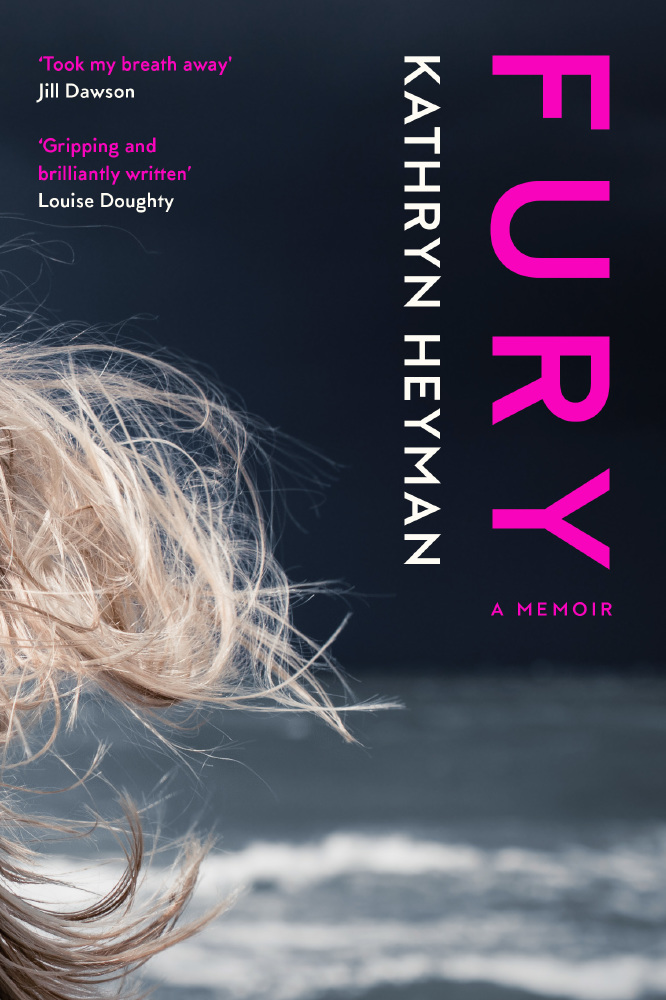On a warm Sunday morning in 2017, my husband and I lay in bed, watching the sunlight on the window. “Tell me again,” he said, “about working on that fishing trawler.”

Fury
I’d spoken of it before – but only in broad terms. He knew that when I was twenty I had found myself working as a deckhand on a fishing trawler in the Timor Sea, off the tropical North coast of Australia. But I’d not told him anything about the storms, the disasters, the losses, the terror. Nor about the moments of extraordinary beauty: the pods of dolphins travelling with us for miles, the sharks that seemed to swarm, the sunsets so brightly red and orange that the whole ocean appeared to be painted.
This time I told my husband the story of that fragile boat on an angry sea. And then, he asked, “What made you go?”
I’d been at a party, I said. Drunk. And so I hailed a taxi. Where I should have been safe. Where I was not safe.
I reported the driver. Eventually it went to trial: a belittling, retraumatising experience. I was not - in the common media parlance – a ‘good girl’. I absorbed that story, for a time.
After the court case I stepped out on to a highway, desperate and lost, with a second-hand backpack full of books and hardback journals. I stuck my thumb out and hoped that I could hitch-hike my way into something, anything, better. All I knew was this: the life I had, the story I had been given, didn’t work. Instinctively, I knew that if I could get somewhere else, I could be someone else.
I hitch-hiked as far as the land would take me. And when I reached the end of the land, I boarded a boat where I thought I could disappear. And on that boat, the Ocean Thief, I was unmade and put back together.
I've always thought of my very self as existing before and after that one wild season when I was twenty, an ill-equipped deckhand, adrift both physically and psychologically in the Timor Sea. So I always knew I would surely write about my time on the Ocean Thief – the adventure, the storms, the theft, the betrayal.
I knew I would write it, but I didn’t know how. It took decades of learning my writing craft to harness this story.
And then it took the bubbling anger of women across the globe, hearing about an American President denying sexual assault, yet seeing case after case of women who had been assaulted, shamed and silenced. As I spoke that morning three years ago, I felt my own fury rising. I thought of all the women – scores and scores of them – who had stories of assault and abuse. And one word flashed white-hot in my mind: enough.
That word, standing alone as a demand – enough. I have had enough. That’s enough. But also, as a reminder, an exhortation. Good enough. Strong enough. Brave enough. Worthy enough.
I wrote that word – enough – on a card and I placed it above my desk. Beneath the fury, I knew something else was pulsing.
I wanted to write a story of possibility. The story in which abusers don’t keep all the power. My story but also a story of women now.
I remembered the silent girl I’d been, and the power that came from finding my own words. I remembered the way that words and work had built my muscle, had made me new, made me stronger, braver, louder.
I understood what the pulsing was then, as I began to write. It was the sound of hope.
‘Fury: A Memoir’ by Kathryn Heyman (Myriad, £8.99)
RELATED: Author Paul Maunder discusses the inspiration behind his debut novel The Atomics
When I started thinking about the kind of novel I wanted to write, my son was five years old and obsessed with superheroes. He also had a tendency to get up at an obscenely early hour of the morning. So, often I would find myself sitting with him on the sofa, cosy under a blanket, watching one of the many superhero franchise films. He’d be wide awake and giving me a running commentary on the action. I’d be bleary-eyed and cradling a coffee...


